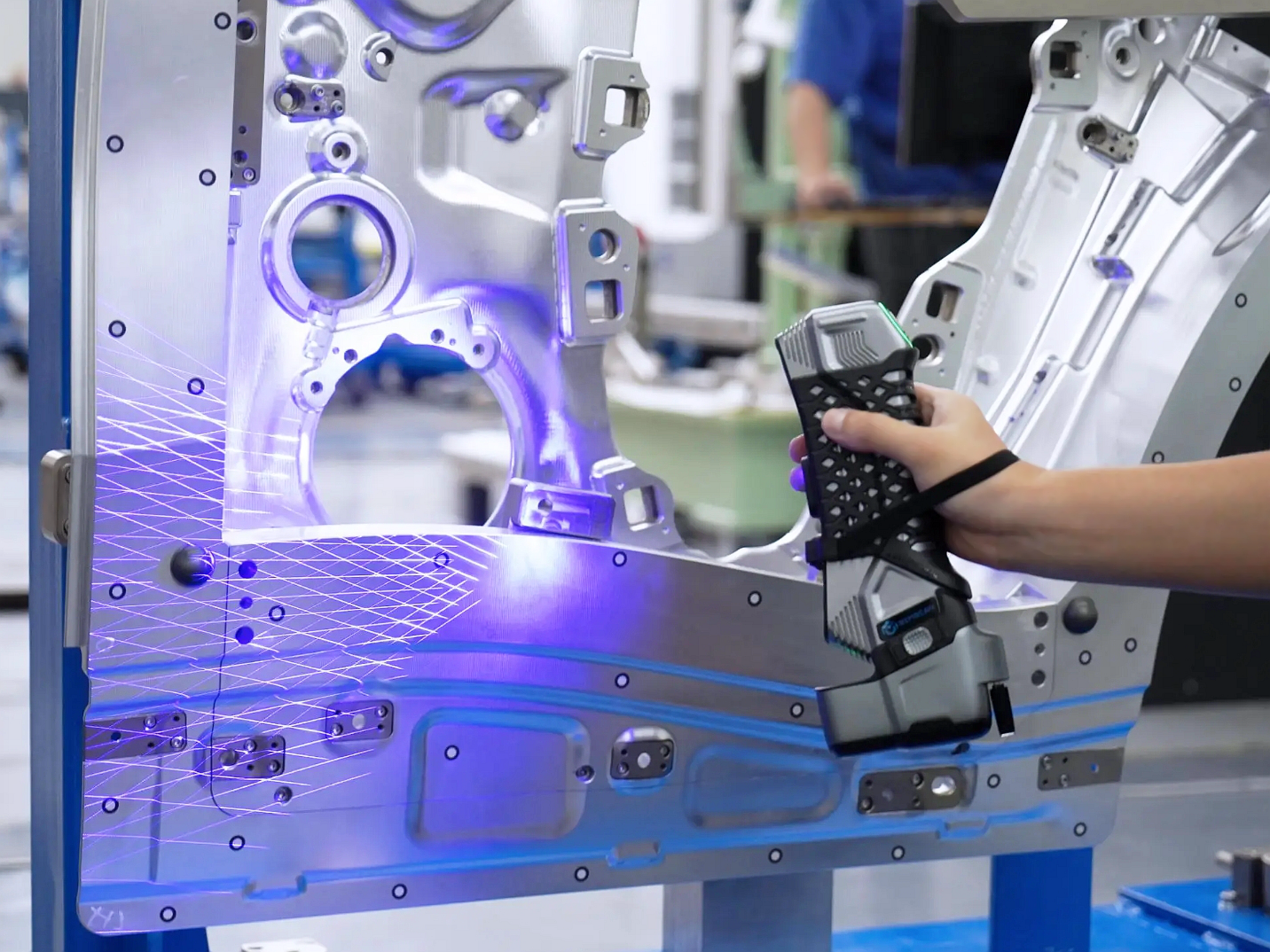3D Scanning Technology: Achieving High-Precision Measurements for Custom Manufacturing
In custom manufacturing, achieving micron-level accuracy is critical for components used in aerospace, automotive, and medical industries. Even deviations of ±50 µm can lead to assembly failures, compromised sealing, or reduced fatigue life in high-stress applications like turbine blades or orthopedic implants.
Neway integrates advanced 3D scanning systems, including blue light structured light and laser triangulation technologies, to deliver non-contact measurements with resolutions down to 10 µm and accuracy of ±15 µm/m. This ensures compliance with GD&T standards for aluminum die castings, CNC-machined prototypes, and multi-material assemblies.
Principles and Technical Specifications of 3D Scanning
Core Technologies
Structured Light Scanning:
Projects blue LED patterns (405 nm wavelength) onto surfaces, capturing distortions with dual 5MP cameras.
Ideal for complex geometries like Zamak 5 Zinc connectors or A380 Aluminum housings.
Resolution: 0.02 mm, Accuracy: ±0.015 mm/m.
Laser Triangulation:
Emits a 650 nm laser line, measuring displacement via a CMOS sensor.
Suitable for reflective surfaces like anodized aluminum or powder-coated parts.
Resolution: 0.05 mm, Accuracy: ±0.03 mm/m.
Key Metrics
Point Density: Up to 8 million points/second.
Scanning Speed: 2–5 seconds per frame.
Software: Geomagic Control X for deviation analysis (ISO 2768-C compliance).
Applications in Custom Manufacturing
Reverse Engineering:
Digitally reconstruct legacy parts (e.g., obsolete Brass 360 valves) for CAD replication.
Achieve <0.1% dimensional deviation in prototyping.
First-Article Inspection:
Compare CNC-machined titanium brackets against CAD models, ensuring AS9102 compliance.
Assembly Validation:
Verify gap/flush tolerances (≤0.2 mm) in multi-material automotive assemblies.
3D Scanning vs. Traditional Metrology
Parameter | 3D Scanning | CMM (Coordinate Measuring Machine) |
|---|---|---|
Measurement Speed | 2–10 minutes per part | 30–60 minutes |
Data Density | 500,000–8M points/part | 50–500 points/part |
Surface Accessibility | Full-field, non-contact | Limited to probe reach |
Portability | Handheld systems available | Fixed installation |
For example, scanning a CuZn10 Brass heat exchanger with 200 internal fins took 8 minutes via 3D scanning vs. 2 hours with CMM, accelerating time-to-market by 65%.
Integration into Quality Assurance Workflow
Stage 1: Incoming Material Inspection
Scan raw Zamak 3 Zinc ingots to verify conformance to ASTM B240 (±0.1 mm tolerance).
Stage 2: In-Process Control
Monitor wall thickness (1.5±0.2 mm) in A360 Aluminum die castings during high-pressure casting.
Stage 3: Final Validation
Generate ISO 9001-compliant reports for medical device components, highlighting deviations >0.05 mm.
Cost-Benefit Analysis
Scrap Reduction: Early warpage detection in A413 Aluminum housings reduced rework costs by $9,200/month.
R&D Efficiency: Reverse engineering a legacy pump housing saved a client 120 hours in CAD modeling.
Compliance: Achieved PPAP approval 40% faster for automotive clients using scan-to-CAD workflows.
Case Study: Precision Validation for Aerospace Brackets
A Tier-1 aerospace supplier required ±0.05 mm accuracy for Inconel 718 brackets. Traditional CMM sampling (5% of units) missed localized thinning (0.07–0.12 mm). Full-field 3D scanning identified 22% non-conforming parts, enabling process adjustments that reduced scrap by 31%.
Conclusion
Neway’s 3D scanning solutions bridge the gap between design intent and manufactured reality, delivering micron-level accuracy for custom components. From low-volume prototyping to high-volume production, our technology ensures compliance with ASME Y14.5, ISO GPS, and customer-specific standards.
FAQs
What is the minimum feature size detectable with your 3D scanners?
Can 3D scanning handle black or reflective surfaces?
How does scanning accuracy compare to CMM for complex geometries?
What file formats are supported for CAD comparison?
Is 3D scanning suitable for soft or flexible materials?

